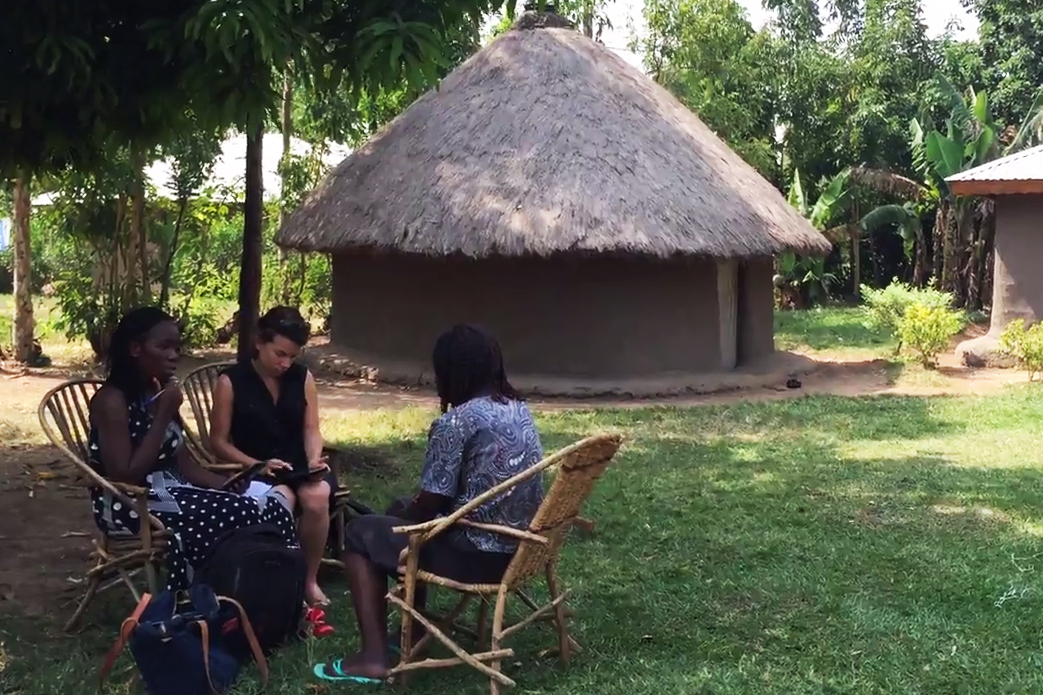Fighting poverty with evidence
The development economist Adina Rom is studying solar lighting in rural Kenya as part of her doctoral thesis at the Center for Development and Cooperation (NADEL) at ETH Zurich. She is also the founder of an ETH spin-off, Policy Analytics, whose goal is to assess the impact of social and environmental policies.

Adina Rom gets excited when she talks about Africa. Since 2009 she has been making regular trips to Kenya, where she has worked and conducted research several times, most recently as part of her doctoral thesis. “I am constantly fascinated by the entrepreneurial spirit I come across during my travels,” she says, “as well as the local people’s talent for innovation and their tireless drive, despite the difficult circumstances.” Inspired by Africa’s entrepreneurial flair, Rom set up her own company: the ETH spin-off Policy Analytics, which advises the Swiss government and NGOs, and carries out evidence-based impact studies on their behalf.
Impact evaluations for better policy solution
Economics has recently seen a boom in a certain type of study modeled on the clinical trial, which has been used for years to test medical drugs. In these studies, participants are randomly divided into two groups: those who receive the active substance, and those who receive a placebo. In their best-selling work Poor Economics, MIT economists Abhijit V. Banerjee and Esther Duflo explain how such randomised trials can be used to measure the impact of development programmes. “We have learned an awful lot in recent years using these approaches,” Rom comments. “Since we are now able to directly measure what type of interventions work best, we can develop more effective solutions and thus have a larger impact.”
For her doctoral thesis at ETH’s Development Economics Group, Rom conducted such a randomised experiment involving over 1,400 households in Kenya’s Busia County, close to the border to Uganda. She wanted to measure people’s willingness to pay for solar lights, understand how they use them, and determine the impact these lights have on their day-to-day lives as well as on their health and the environment. To this end, she split the households randomly into different groups, some of whom were given the lamps for free and others who were offered the lamps at different prices. The result: at the current market price of 9 US dollars, 29 percent of households bought a solar lantern, but if they were sold at a subsidised price of 4 US dollars, demand more than doubled. This led to a sharp reduction in harmful emissions caused by burning kerosene – the fuel commonly used for lighting in many African households. This reduction slows climate change and improves indoor air quality.
Although many had expected these findings, there had previously been little quantitative evidence to support them. The trial also showed that people actually used the solar lights frequently, even if they had been handed out free of charge. “Many assume that people do not use products if they received them for free,” Rom says. “But studies such as ours prove the opposite. In a lot of cases, it makes sense to hand out products for free if they prevent health risks or have a positive impact on the environment.”
Inspired by her mentors
Rom’s motivation to campaign against poverty and injustice can be traced back to her early childhood. She grew up in a Jewish household in Zurich. “This engendered a sense of solidarity with other minorities and an awareness that my parents and I were privileged and incredibly lucky, because our ancestors were able to live in safe Switzerland during the Holocaust.” After leaving high school, Rom spent several months travelling around India, working in an orphanage. Experiencing poverty on a daily basis made her eager to learn how to fight poverty effectively. She started studying political science at the University of Geneva and at the age of almost 20 she travelled to New York as a youth delegate of the Federal Department of Foreign Affairs to attend the UN General Assembly, where she made a speech against poverty, together with Ban Ki-moon.
Dina Pomeranz, Assistant Professor of Microeconomics at the University of Zurich, then introduced Rom to approaches in evidence-based development policy and encouraged her to take her first job abroad with Innovations for Poverty Action (IPA), an “incredibly interesting and challenging job with a lot of responsibility”, as Rom remembers. As Director of Operations, she was responsible for coordinating research projects in Kenya commissioned by universities around the globe. Within just two years, the organisation grew from 60 to 250 staff and opened 9 new regional offices. “At the time I was doing several jobs at once,” Rom recalls. “It was sometimes challenging, but also extremely rewarding and I learned so much.” Since then, she has made regular trips back to Kenya, a country that is currently undergoing a transformation: “There has been a remarkable decline in child mortality, hunger and poverty. Today, most children attend school and young people have far more opportunities than their parents had. There is a spirit of optimism.”
Collaboration with microsensor producers

After completing a Master’s degree in the USA, Rom returned to Zurich four years ago. “At the time I was looking for a job in Switzerland and came across an opportunity at NADEL. Professor Isabel Günther was interested in randomised field experiments in rural Kenya. The job was a perfect fit for my experience and interests.” But isn’t a Swiss technical university an unusual choice for a development economist with an international CV? For Rom, there is no question: “I am mainly interested in research that has an impact on policy. NADEL often collaborates with NGOs and the government. I am in exactly the right place.”
At the same time, ETH offers opportunities for exceptional collaborations. As part of her doctoral thesis, Rom worked with the ETH spin-off Bonsai Systems. She used the company’s microsensors in her field trial to measure how frequently and how long the solar lights were actually used in the Kenyan households. Bonsai Systems trained a Master’s student for the experiment who then soldered the sensors onto the solar lamps in Kenya. Rom then compared the sensor data transferred via Bluetooth with the electronic questionnaires in which study participants had stated how often they used the lights. “It’s an absolutely fascinating time,” Rom says excitedly. “It has never been easier and cheaper to collect good data. This now allows us to measure the impact of our interventions much more precisely.”
Growing demand for impact studies
At present, Rom is channelling all her energy into finishing her doctoral thesis. After that, she wants to intensify the collaboration between her spin-off and development organisations as well as the Swiss government. She is convinced that demand for evidence-based impact evaluations is growing. She has already completed similar work, including first consultancies with her business partner, Dr Andreas Beerli of the KOF Swiss Economic Institute, for the Swiss Agency for Development and Cooperation (SDC) and Aiducation International.
Although Rom’s company is based in Switzerland, she will keep in touch with Kenya, the country she has grown so fond of over the years: Carol Nekesa – her mentor and the deputy manager of IPA during Rom’s time working for the organisation in Kenya – is now a member of the Swiss spin-off’s advisory board. “I learned a huge amount from her,” Rom says. “She has each foot in a different world and knows how to build bridges between them.” A talent that surely also characterises the young entrepreneur today.
